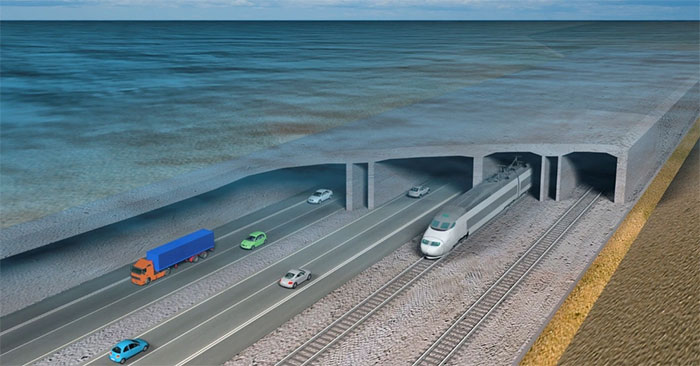How to build the world's longest sea crossing, located at a depth of 40m

The Fehmarnbelt Tunnel is made up of 89 sections and is being built by Femern A/S, Rambøll, Arup and TEC. It is the world's longest and deepest submerged tube tunnel. When completed in 2029, the Fehmarnbelt Tunnel will reduce travel times from 45 minutes by ferry to 7 minutes by train or 10 minutes by car.
The tunnel will require 360,000 tons of steel rebar to complete, nearly 50 times the weight of the Eiffel Tower's metal structure. Seventy vessels will dredge the 18-kilometer-long tunnel, with a total of about 12 million cubic meters of earth being excavated from the seabed. On the Danish side, the construction site is the size of 373 football fields.
The submerged tube tunnel consists of 89 sections, including 79 standard sections and 10 special sections. Each standard section weighs approximately 73,000 tonnes and is 217 metres long, 42 metres wide and 10 metres high. The smaller special section is almost half as long as the standard section but slightly wider and higher.
The tunnel sections are prefabricated on land. They are placed in position by barge and then sunk and sealed on the seabed at depths of up to 40 m.
The Fehmarnbelt tunnel is expected to cost around $1.2 billion. The first section of pipe will be laid underwater in the coming weeks. The Fehmarnbelt tunnel is expected to be completed in 2029 and operate for at least 120 years.
You should read it
- China is building the world's fastest super wind tunnel
- 5 strongest wind tunnels in the world
- Secure web tunnel setting
- The tunnel transports people with magnets at up to 1,000km/h
- Discovered a secret tunnel under the Mayan thousand-year-old pyramid
- Impressed by Elon Musk's cross-city traffic project video
 Barrier protects London from flooding
Barrier protects London from flooding The world's most advanced mirrors
The world's most advanced mirrors Captured electrons moving at 7,920,000 km/h
Captured electrons moving at 7,920,000 km/h Is it good to eat guava, including the skin?
Is it good to eat guava, including the skin? The world's 'stupid' bird, at the moment of life and death it 'loses its memory'
The world's 'stupid' bird, at the moment of life and death it 'loses its memory' 10 strangest military vehicles in world history
10 strangest military vehicles in world history